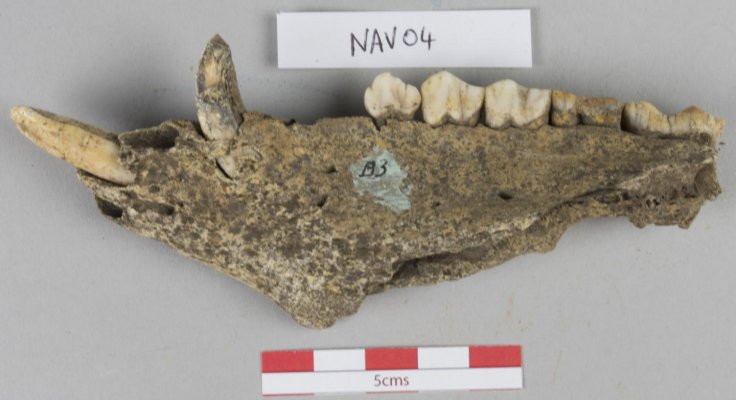Ancient mass gatherings at Ulster in Ireland's iconic archaeological site attracted people who transported people and animals over huge distances, finds a study that analyzed the bones of 35 animals excavated from Navan Fort.
Led by Richard Madgwick of Cardiff University, the study in collaboration with researchers from Queen's University Belfast, Memorial University Newfoundland and the British Geological Survey, unearthed bones for the research at the site that had long been considered a centre for ritual gatherings.

The site has a huge 40m diameter building and a barbary ape cranium, likely from at least as far as Iberia, suggesting that the pigs, cattle and sheep were brought from across Ireland and about 100 miles apart to rear them as far afield as Galway, Donegal, Down, Tyrone and Antrim.
Dr Madgwick of Cardiff University's School of History, Archaeology and Religion, said: "Our results provide clear evidence that communities in Iron Age Ireland were very mobile and that livestock were also moved over greater distances than was previously thought."
Rare livestock found
The livestock included huge number of pigs that was rare for this period, indicating that Navan Fort was a feasting centre. Coupled with literary evidence, researchers said in early Irish literature pork is the preferred food of the feast. "It is clear that Navan Fort had a vast catchment and that the influence of the site was far-reaching."
Using the technique of multi-isotope analysis on samples of tooth enamel to find the origins of each animal, the chemical compositions of food and water helped researchers to link the geographical areas where they are sourced or raised.
Multi-isotope analysis
"In the absence of human remains, multi-isotope analysis of animals found at Navan Fort provides us with the best indication of human movement at that time. Feasting, almost invariably associated with sacrifice, was a social necessity of early societies where the slaughter of a large domesticate necessitated the consumption of a large amount of meat in a short period of time," explained co-author of the research, Dr Finbar McCormick, of Queen's University, Belfast.
Earlier this year, Dr Madgwick's research of 131 pigs found at sites near Stonehenge revealed animals came from as far away as Scotland and the past study had already revealed the origins of people who visited this area and the extent of the population's movements at the time in British prehistory.









